Solutions
Horse Construction offers full range of structural strengthening materials with technical supports, documentation supports, products supports, project supports.
Bonded steel plate reinforcement method is a kind of reinforcement method, which uses high-strength building structural adhesive to bond the steel plate to the surface of the component, so as to improve the bearing capacity of the component.
Bonded steel plate reinforcement method is a kind of reinforcement method, which uses high-strength building structural adhesive to bond the steel plate to the surface of the component, so as to improve the bearing capacity of the component.
This method was started in 1967. Fleming and King, South African scholars, carried out an experiment to reinforce concrete beams with external bonded steel plates instead of steel bars. In the experiment, steel plates were bonded to the tensile side of the bottom of concrete beams, which proved the feasibility of this reinforcement method.
Over the next decade, scholars at home and abroad have done a lot of experimental research, theoretical analysis and engineering practice. The bonded steel plate reinforcement method has gradually matured, and has been widely used in concrete flexural, eccentric compression, tension member reinforcement projects.
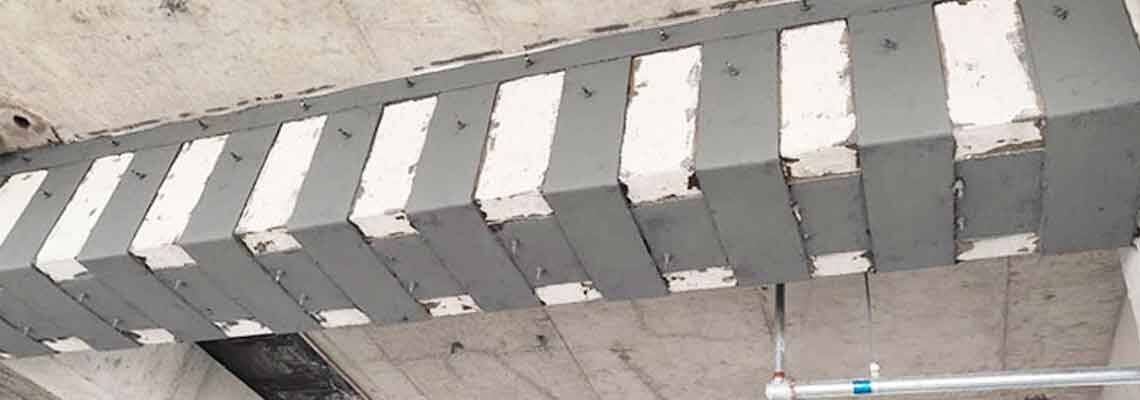
The Characteristics of the Reinforcement Method with Bonded Steel Plates
The principle of bonding steel plate reinforcement method is to use adhesive to bond steel plate to the surface of the original component, so that the steel plate and the original structure form a new bearing system, the steel plate participates in the force, so as to achieve the purpose of reinforcing the concrete structure. External bonded steel plate reinforcement method has the following remarkable characteristics:
1. Fast construction and short construction period. The construction speed of this reinforcement method is fast. From cleaning, leveling, sticking steel plate to pressure solidification, it only takes 1-2 days, which can save construction time greatly and achieve remarkable economic benefits.
2. It has good overall mechanical performance. In general, the bond strength of the adhesives is higher than the tensile strength of concrete, which can make the steel plate and the original components form a good whole.
3. High utilization rate and low consumption of steel.
4. The small space occupied by the bonded steel plate hardly increases the cross-section size and weight of the strengthened members, and has little effect on the use clearance and shape of the building, and hardly affects the appearance of the members.
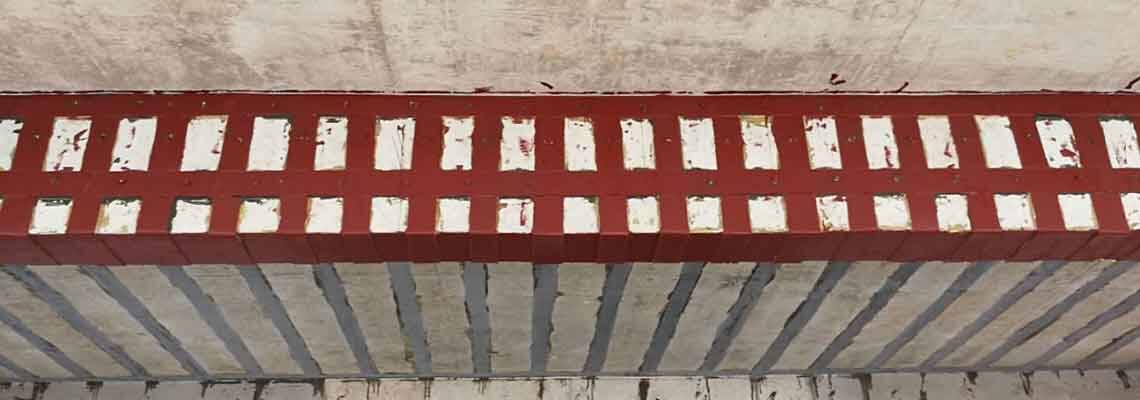
Scope of application of bonded steel plate reinforcement method
According to the principle and stress characteristics of concrete members strengthened with bonded steel plates, this strengthening method has its scope of application.
1. It is suitable for reinforcement of reinforced concrete flexural, eccentric compression or tension members, but not plain concrete members, including those with reinforcement ratio of less than 0.2% on one side of longitudinal reinforcement.
2. Because the steel plate is adhered to the concrete surface, the concrete strength of the reinforcement component is very important to the whole reinforcement system. Therefore, in general, the measured concrete strength of reinforced members should not be lower than C15, and the bond strength between steel plate and concrete should not be lower than 1.5 N/mm2.
3. Because of the softening characteristics of the adhesives in the steel plate reinforcement system after exceeding the glass transition temperature, the performance of the adhesives is greatly reduced, so the use of the adhesives should comply with the temperature limit provided by the supplier. At present, the glass transition temperature of commercial building structural adhesives is about 60-82 C. Considering that the temperature of common concrete structures is lower than 60 C, the ambient temperature of long-term use of concrete structures strengthened with steel plates should not be higher than 60 C. In order to reinforce concrete structures in special environments (such as high temperature and humidity, medium corrosion and radiation, etc.), besides taking corresponding protective measures according to the relevant national standards, structural adhesives resistant to environmental factors should also be used and pasted according to special technological requirements.
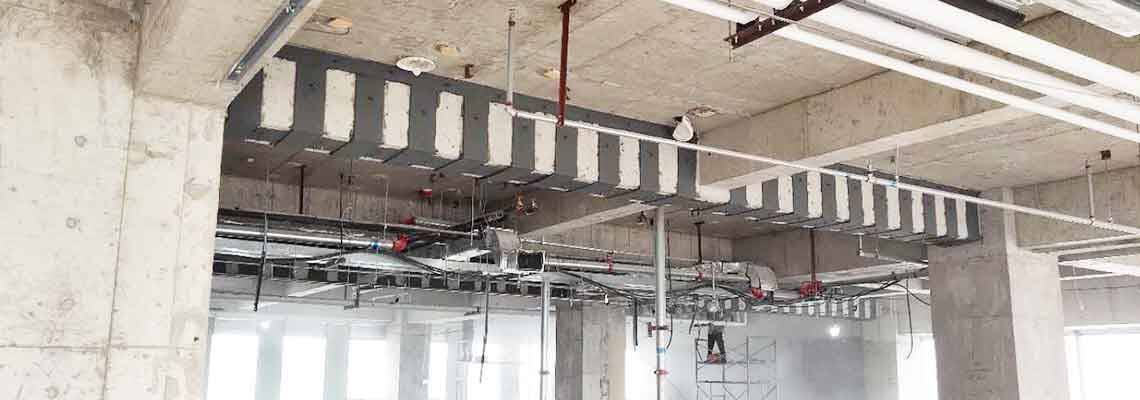
General Requirements for Sticking Steel Plate Reinforcement Method
1. When bonding steel plate to reinforce concrete structural members, the steel plate should be designed to bear only axial stress.
2. The steel plate pasted on the surface of concrete members should be treated with anti-rust treatment. Surface anti-rust materials should be harmless to steel plates and adhesives.
3. When using bonded steel plates to reinforce concrete structures, measures should be taken to remove or most of the live loads acting on the structures.
4. When there are fire protection requirements on the surface of strengthened members, the adhesives and steel plates should be protected according to the fire resistance grade and fire resistance limit requirements stipulated in the current national standard "Code for Fire Protection of Architectural Design" (GB 50016).
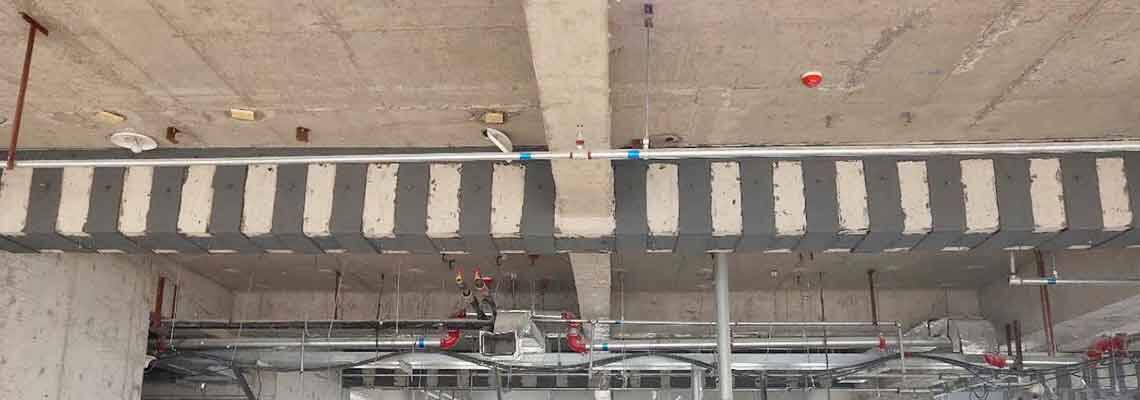
Best steps in the steel plate bonding process
1. sticky veneer treatment
(1) The concrete surface should be chiseled to remove the powder layer, grease scale and dirt, then the 1-2mm thick surface layer should be removed by grinding with angle mill, the larger depression should be repaired with leveling glue, the dust should be blown by compressed air after grinding, and finally the surface should be cleaned with cotton cloth and acetone, waiting for the paste surface to be completely dried and reserved.
(2) Angle mill is used for rough and rust removal of steel plate adhesive surface, until the polishing gloss appears. If it is clean before use, it can be wiped with dry cloth only. Otherwise, cotton cloth can be dipped with acetone to clean the surface, and be completely dried for later use.
(3) The main materials used in the process are goggles, dust masks, impact hammers and flat shovels, hammers, angle mills, diamond grinding discs, grinding wheels, air compressors, cotton cloth and acetone.
2. drilling bolt hole
Expansion bolts can be used for compression fixing. It is necessary to drill holes to fix the expansion bolts in appropriate positions on the reinforcement members.
3. adhesive preparation
(1) Building structural glue is composed of A and B. Clean containers (plastic or metal basin, no oil, water, impurities) and weighing apparatus are mixed according to the prescribed mixing ratio, and stirred with mixer for about 5-10 minutes until the color is uniform. When mixing, it is better to mix along the same direction to avoid mixing air to form bubbles as far as possible, and the place should be well ventilated.
(2) The main materials used in the process are agitators, containers, weighers, greasy knives and gloves.
4. glue and paste
(1) After the adhesives are prepared, they are coated on the treated steel plate surface (or concrete surface) with a greasy knife. The glue section should be triangular, the middle thickness should be about 3 mm, and the edge thickness should be about 1 mm. Then the steel plate should be pasted on the concrete surface, fixed with a fixed compression system, and properly pressurized to squeeze the glue just from the edge joint of the steel plate. Out of degree.
(2) The main materials used in the process are greasy knives and gloves.
5. test
(1) The sticking steel plate can be lightly tapped with a small hammer to judge the sticking effect from the sound, or can be detected by a supernatant. If the effective bonding area of anchorage zone is less than 90% and that of non-anchorage zone is less than 70%, the steel plate should be stripped and re-bonded.
(2) Load test can also be used for important components. Generally, the standard values of normal loads are loaded by stages. The test results are more intuitive and reliable, but the cost is higher and the time-consuming is longer. Need jack or counterweight (commonly used sand bags, bricks), dial gauge, crack microscope, weighing apparatus.
6. maintenance
After reinforcement, steel plate should be protected by 20mm thick M15 cement mortar, or by anti-rust paint to avoid corrosion of steel.
You can find anything here you are in need of, have a trust trying on these products, you will find the big difference after that.
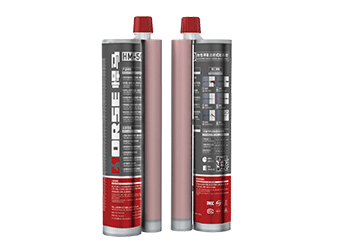
two-components modified epoxy resin adhesive, with high quality plastic tube, double cartridge package

Two-component epoxy modified epoxy structural strengthening adhesive for bonded steel plate to concrete

Modified epoxy resin structural perfusion adhesive, specifically for supporting adhesive bonded steel reinforcement